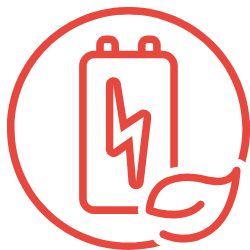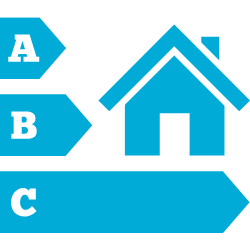Demonstration and integration of sustainable heating and cooling solutions
Fulfilling the targets of Europe’s energy and climate strategy.
The Energy Union and the Energy and Climate Policy Framework for 2030 has set ambitious targets for the European Union (EU) (icons). The majority of the existing European residential building stock was constructed before the Energy Performance of Buildings Directive (EPBD). There is large potential to achieve solutions that can be integrated to existing dwellings and through different measures. One of those measures is optimizing use and management of thermal energy by allowing it to be stored to level demand peaks, increasing use of renewables affected by intermittency such as solar-based heating. Thermal Energy Storage (TES) systems offer an increase in overall efficiency and better reliability when applied in an energy framework, leading to better economics, reductions in investment and running costs, as well as reductions in carbon dioxide (CO2) emissions.

Reduce greenhouse gas emissions
by at least 40% by 2030 (from 1990 levels)

Increase the share of RES consumed
at least 32% of renewable energy share

Energy savings target
27% of energy savings by 2030

Improvement in energy efficiency
at least 32.5% by 2030

EU building stock inefficiency %
An estimated 97% is considered energy inefficient (around 30 billion m2)

EU building stock life expectancy
75-85% of it will continue to be utilized by 2050.
Get More Information
Click on the links below to deepen your knowledge about MiniStor project



Publications and articles
Are you interested in scientific publications? Click below!
The Challenge
Residential Sector Thermal Energy Consumption
Cooling is a fairly small share of total final energy use, but its demand from households in the EU is rising during summer months, a trend linked to climate change. About 84% of heating and cooling is still generated from fossil fuels, while only 16% is generated from renewable energy sources (RES). Bearing in mind that 75% of the energy used by this sector is sourced from fossil fuels, decarbonisation of the heating and cooling sector is essential to reach and fulfil the EU’s climate and energy goals.
The heating and cooling sector must sharply reduce its consumption of fossil fuels, while securing energy supply and provision. In addition, heating and cooling storage products are usually offered as separate products to the end consumer.

The residential sector in the EU
38% total final energy consumption (2015)

Third largest energy consuming sector
after transport and industry

Heating and cooling in the EU
around 45% of energy in is used in the residential sector

Heating and hot water in EU households
account for 79% of total final energy use (192.5 Mtoe)
Get encouraged and trained with MiniStor
Access our trainings and latest discoveries!



Our MiniStor System
The MiniStor system provides stability, performance and usage of at least 20 years with a minimal-size.
The MiniStor thermal storage system
The MiniStor thermal storage system is based on a high-performing thermochemical material (TCM) reaction, combined with a hot and a cold phase-change materials (PCM). The PCM’s use their latent heat during phase change to storage the heat and the cold produce from the TCM. The electrical storage is a conventional system based on a Li-ion battery for flexibility and usage year-round. The storage system allows for compact storing of RES-based energy using hybrid photovoltaic thermal panels (PVT).
This system includes a home energy management system (HEMS) that connects to the Internet of Things (IoT) to synchronise and efficiently manage the overall supply and demand at household level, responding for grid constraints and price signals.

The MiniStor system provides stability, performance and usage of at least 20 years with a minimal-size. The estimated storage material volume (TCM+PCM(hot)+PCM(cold) will be 0.72 m3. The overall system storage density is extremely high, up to 10.6 times higher than water-based storage systems for an operating heating temperature difference in the range of 15oC (around 182 kWh/m3). This system reduces the net energy consumption of a building by at least 44%, and will have an expected return-on-investment period of 6.7 years.
Our Demostration Sites
The MiniStor concept will be demonstrated and evaluated in an operational environment of real-life conditions in one pre-pilot and five demonstration sites, following appropriate deployment guidelines and legislations